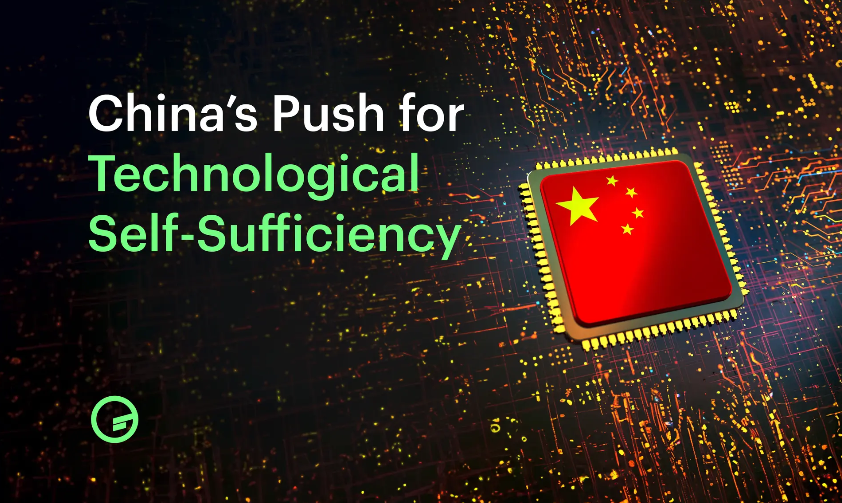China’s Push for Self-Sufficiency and Its Impact on the Electronics Supply Chain
30-10-2024 | By Fusion Worldwide

When the United States first imposed trade restrictions on technological partnerships with China in 2018, the electronic component supply chain braced for disruption. Over the next year, tariffs were expanded to cover hundreds of billions of dollars’ worth of goods, including many tech products like semiconductors, circuit boards, and telecommunications equipment. Restrictions extended to partnerships, blacklisting companies like Huawei Technologies, barring U.S. firms from doing business with them without a special licence.
The Ripple Effects of a New Trade Landscape
While the full effects of these strategies have taken time to surface, China’s response is increasingly evident. In 2022, China launched a major initiative to expand domestic demand, with IT infrastructure and data sovereignty prioritised to reclaim control from foreign entities. Tactics first outlined in Made in China 2025 are coming to fruition, setting the stage for a fundamental shift in the electronic component industry on a global scale.
China’s production of integrated circuits (ICs) and semiconductor equipment saw double-digit growth in early 2023, highlighting the progress of its domestic technology initiatives. The implications for the global electronics supply chain are becoming significant, as industry stakeholders evaluate the potential impact of China’s technological self-sufficiency.
Hardware to Software: China’s 'Delete All' on U.S. Technology
China aims to reduce its reliance on U.S. technology by 2027, with measures spanning hardware and software alike. Initially focused on hardware replacement, China's actions include restricting domestic firms from using Micron chips in critical infrastructure. Meanwhile, companies like Huawei have been pivotal, with the government facilitating major purchase orders for memory chips prior to U.S. restrictions taking effect.
Following export controls, Huawei has pivoted to concentrate on chip technology development, securing its position as a preferred option for Chinese consumers. Huawei’s growth in the domestic market illustrates its success in adapting to shifting dynamics, with customers increasingly choosing Huawei-based servers over those from competitors like Dell and Hewlett Packard Enterprise.
Telecommunications on the Cutting Edge
The initial phase of China's self-sufficiency plan targeted U.S. chipmakers like Intel and AMD. Although the deadline for replacing U.S. technologies is set for 2027, the repercussions were felt as early as Q1 this year. Intel, with China representing its largest market, faces significant risks, with potential revenue losses of up to 27%. AMD, although less exposed with around 15% of its revenue derived from China, also remains vulnerable.
As companies weigh their options in light of this evolving landscape, strategic planning and risk management are crucial to navigating the increasingly complex environment. Balancing market opportunities against geopolitical risks is now essential for sustaining resilience in the face of uncertainty.
AI as the Next Frontier in the U.S.-China Tech Competition
Beyond its effects on the supply chain, the tech rivalry between the U.S. and China has positioned AI as a pivotal area for innovation and competition. Nvidia is a prominent player in this sector, with the U.S. government granting its GPUs exemptions from trade restrictions due to their strategic importance. However, this advantage is set to shift as the U.S. has announced a 2025 end date for GPU exemptions under Section 301 tariffs, potentially reshaping the competitive AI hardware sector.
In the meantime, Huawei claims its AI breakthroughs are outpacing developments in the U.S. and Europe. With the global launch of its proprietary HarmonyOS, Huawei is setting itself as a leading infrastructure provider in AI, now considered second only to Nvidia in market impact. The AI sector is now a key battleground, with Huawei, Intel, and AMD striving to capitalise on emerging opportunities.
The Wider Impact of China’s Tech Trajectory on Global Supply Chains
China's acceleration towards technological independence continues to have repercussions that extend well beyond hardware to software, IT infrastructure, and information security. The experiences of companies like Intel and AMD illustrate how geopolitics and economics shape the semiconductor industry and broader supply chains.
With a U.S. presidential election approaching, the potential for new policy shifts could either increase or ease the tensions between the two nations. These political changes will influence the trajectory of global tech relations, affecting not only the competitive dynamics of the semiconductor and AI industries but also the future resilience of electronic component supply chains worldwide.
For further insights into how AI is impacting global competition and reshaping the electronic component supply chain, read the full article on Fusion Worldwide’s blog here.

